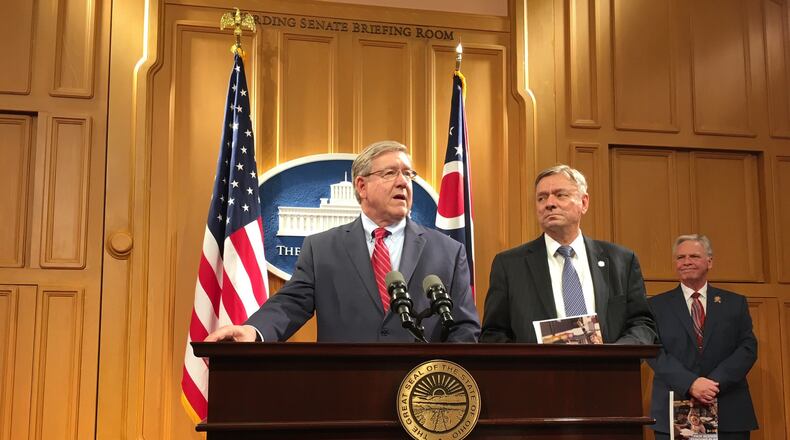MARCH: Bipartisan plan seeks school funding overhaul
Several of those districts, including Dayton, would have seen their state funding frozen under the plan, while some richer suburban districts were in line for large increases, in part because of rising enrollment. Householder’s office did not respond to repeated calls last week, but told Gongwer, “We’re continuing to work on it, but I think we have other options out there.”
ICYMI: Staffing is a challenge for area nursing homes. Here's what we know.
In Ohio’s budget process, the House of Representatives goes first, following by the Senate. Peggy Lehner, the Senate Education Committee Chair, said if Householder doesn’t put the Cupp-Patterson school funding plan in the budget, she doesn’t see the Senate amending the budget to add that proposal.
“I think we have the same concerns that the speaker is wrestling with – how do you fund it, and how do you get the additional funds to the high-poverty districts where it would be needed?” Lehner said, calling the Cupp-Patterson plan and Gov. Mike DeWine’s proposal “two very, very different approaches.”
MARCH: Plan would boost most districts; Dayton funding flat
DeWine’s proposal would have kept the state school funding formula basically the same, but would have helped high-poverty districts by targeting $550 million for “wraparound” support services, with more funding going to schools with a higher number of economically disadvantaged students.
Cupp-Patterson drew praise for their bipartisan effort to rework the formula based on an accurate cost-per-student figure, and for getting more districts on an understandable formula, rather than forced caps and guarantees. But the first district-by-district funding numbers seemed to favor many richer suburban districts.
That upset many educators because for decades in Ohio, academic performance – as measured by standardized tests – has been correlated closely with socioeconomic factors. Overall scores have been lower in poor communities and higher in wealthy communities.
Lehner, R-Kettering, talked about the need to address “the additional costs that districts are going to incur by virtue of the poverty of their students.”
EARLIER: DeWine budget would add money for children’s initiatives
“Particularly in the Dayton area, we have a system that is about to enter the Academic Distress Commission unless they can turn themselves around, and they cannot do that without additional resources,” Lehner said. “So I have grave concerns about a budget that doesn’t allocate the kind of money we need in our high-poverty districts.”
Householder told Gongwer it is possible the House will try to make tweaks to DeWine’s original school funding proposal for the upcoming two-year period, while continuing to work on the Cupp-Patterson plan for the future.
In the past month, more than 70 people have testified before the House subcommittee that Cupp and Patterson co-chair on education. The list includes speakers representing school boards, charter schools, think tanks, teachers unions, business groups, catholic schools and more.
Those groups have sometimes-competing and sometimes-overlapping concerns, but Lehner said there’s a base question of whether the state has the money to fund its education desires.
RELATED: Task force studied impact of poverty on schools
“(Cupp-Patterson) is a significant increase in funding – something to the tune of $1 billion,” Lehner said. “So that’s one question that’s out there that I’m sure Speaker Householder is trying to wrestle with, is where do you come up with a billion dollars to fund the proposal?”
Ohio legislators have roughly two months to get a budget bill, including school funding, passed in the House and Senate. Then it will go to a conference committee, where differences between the two chambers’ bills will be hashed out, and finally sent to DeWine for his signature by June 30.
Lehner said she’s been working on legislation concerning e-school funding and Academic Distress Commissions while the House works on school funding.
“We’ll get our turn before long,” she said.
About the Author

